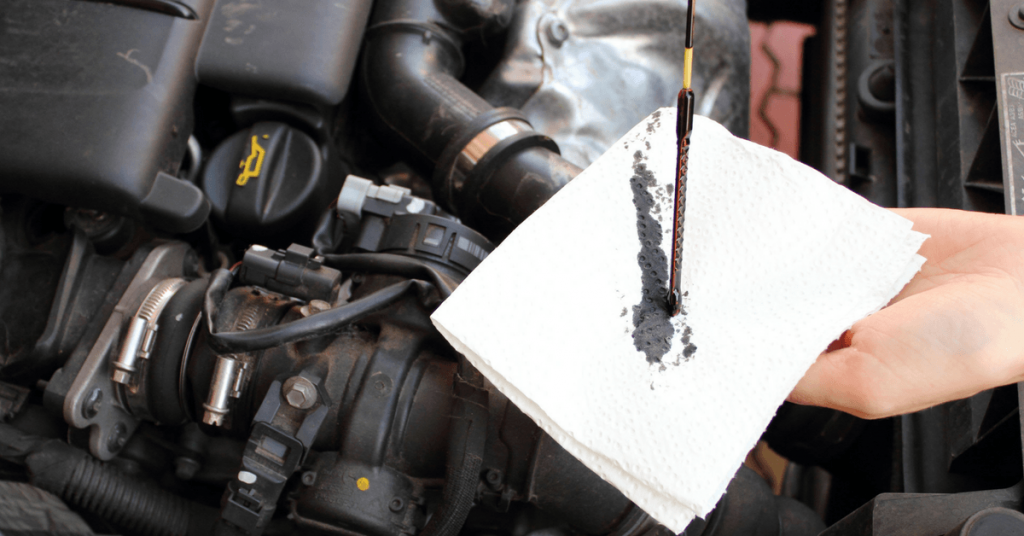Regular oil changes are a crucial aspect of maintaining your vehicle’s health and performance. Just as our bodies need regular check-ups and care, our cars require consistent attention to function at their best. This guide will help you recognize the telltale signs that it’s time for an oil change, ensuring your engine stays in top condition and avoiding potentially costly repairs down the road.
The Basics of Engine Oil
Before diving into the signs, let’s briefly review what engine oil does and why it’s so important. Engine oil serves three primary functions:
- Lubrication: It reduces friction between moving parts, preventing wear and tear.
- Temperature Control: Oil helps dissipate heat, keeping your engine from overheating.
- Engine Protection: It prevents the buildup of harmful deposits and corrosion.
As for how often you should change your oil, the old rule of thumb was every 3,000 miles. However, modern vehicles and improved oil quality have extended this interval. Many manufacturers now recommend oil changes every 5,000 to 7,500 miles, or even longer for some models. Always consult your vehicle’s manual for the most accurate guidance.
Key Signs You Need to Change Your Oil
Now, let’s explore the six main indicators that it’s time for an oil change:
1. Dashboard Oil Change Light
Most modern vehicles are equipped with an oil change indicator or a check engine light that illuminates when it’s time for service. This light is typically triggered by factors such as mileage, engine runtime, or oil quality sensors. When you see this light, don’t ignore it. It’s a clear warning that your car needs attention soon.

2. Unusual Engine Sounds
If you start hearing knocking, ticking, or grinding noises from your engine, it could be a sign that your oil isn’t doing its job properly. As oil degrades, it becomes less effective at lubricating engine components. This increased friction can lead to these unusual sounds. Pay attention to your car’s normal sounds, and if you notice a change, it might be time for an oil change.
3. Dirty or Dark Oil
One of the simplest ways to check your oil is by using the dipstick. When you pull it out, the oil should be a clear amber color. If it’s dark, dirty, or gritty, it’s time for a change. Clean oil is translucent, allowing you to see through it easily. As it collects debris and breaks down, it becomes opaque and darker in color. This visual check can give you a good indication of your oil’s condition.

4. Exhaust Smoke
While some exhaust vapor is normal, especially on cold days, visible smoke can be a cause for concern. If you notice gray or blue smoke coming from your exhaust, it could indicate that oil is leaking into the engine combustion chamber. This not only means you’re losing oil, but it’s also a sign that your engine isn’t functioning properly. While there can be other causes for exhaust smoke, old or low oil is often the culprit.
5. Oil Smell Inside the Car
If you detect a burning oil smell inside your vehicle, it’s a sign that something’s not right. This odor could indicate that oil is leaking onto hot engine parts, or that the oil has become too old and is burning in the engine. Not only is this a sign that you need an oil change, but it could also point to a potentially dangerous situation. Oil leaks near hot engine components can pose a fire hazard if left unchecked.
6. Excessive Mileage Without an Oil Change
Even if you don’t notice any of the above signs, keeping track of your mileage since your last oil change is crucial. Many modern cars have an oil life monitoring system that tracks various factors to determine when an oil change is needed. If you’ve driven beyond the recommended mileage or your car’s system indicates it’s time, don’t delay in getting an oil change. Long-term neglect can severely impact your engine’s efficiency and longevity.
Consequences of Waiting Too Long for an Oil Change
Ignoring these signs and postponing oil changes can lead to several serious consequences:
- Increased Engine Wear and Tear: As oil degrades, it becomes less effective at lubricating and protecting engine components. This leads to increased friction and wear on vital parts, potentially shortening your engine’s lifespan.
- Overheating Risk: Old or insufficient oil doesn’t dissipate heat as effectively. This can cause your engine to run hotter than it should, potentially leading to overheating and severe damage.
- Decreased Fuel Efficiency: When your engine isn’t properly lubricated, it has to work harder to perform. This increased effort translates to higher fuel consumption, hitting you in the wallet at the gas pump.
- Risk of Engine Failure: In the worst-case scenario, neglecting oil changes can lead to complete engine failure. The repair costs for major engine damage or a full engine replacement far outweigh the cost of regular oil changes.

Tips to Stay on Top of Oil Changes
To avoid these issues and keep your car running smoothly, consider the following tips:
- Use Technology: Many car manufacturers now offer apps that can remind you when it’s time for service. You can also set reminders on your smartphone or use the old-fashioned oil change sticker on your windshield.
- Stick to Manufacturer’s Recommendations: Your car’s manual is the best source of information for maintenance schedules. Different makes and models have different requirements, so always follow the guidelines specific to your vehicle.
- Check Oil Levels Regularly: Get in the habit of checking your oil level and condition every few weeks. It’s a simple process that can help you catch potential issues early.
Conclusion
Paying attention to these signs and staying proactive about oil changes is one of the simplest and most effective ways to extend your vehicle’s life and maintain its performance. By understanding what to look for and why it matters, you’re taking an important step in responsible car ownership.
Remember, the cost and effort of regular oil changes pale in comparison to the potential expenses of major engine repairs. Don’t ignore the signs your car is giving you. If you notice any of these indicators or you’re approaching the recommended mileage for an oil change, take action. Your car—and your wallet—will thank you in the long run.
By staying vigilant and responsive to your car’s needs, you’re not just maintaining a vehicle; you’re protecting an investment and ensuring safer, more reliable transportation for you and your loved ones. So, the next time you hear a strange noise or see that dashboard light come on, don’t delay—it might just be your car’s way of asking for a little TLC in the form of fresh, clean oil.